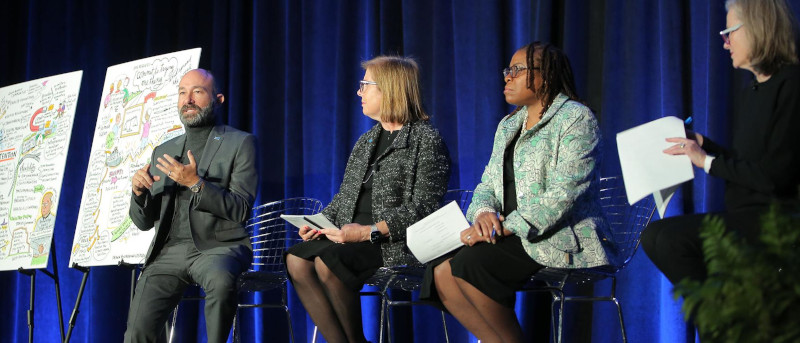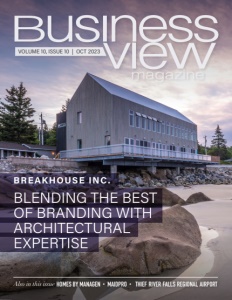Construction Management Association of America (CMAA)
Navigating Tomorrow: The Construction Management Association of America’s Vision for the Future of Program and Construction Management
Implementing forward-thinking strategies, the Construction Management Association of America is paving the way for the industry’s next chapter.
In the fast-moving and ever-changing construction world, where the intricacies of roles and responsibilities often blur, the Construction Management Association of America (CMAA) provides clarity and direction. CMAA also represents the voice of the sector, championing issues and addressing concerns on behalf of its members.
Established in 1982, during a period marked by the burgeoning growth of associations, the CMAA sought to clarify the often misunderstood role of the construction manager. This was a time when the lines between job site superintendents, project engineers, and construction managers were indistinct, leading to confusion and misunderstandings about the nature of each position.
Andrea S. Rutledge, CAE, the President & CEO of CMAA, recalls, “In 1982, the role, profession, and scope of work of a construction manager was poorly understood. What was emerging in the 80s was the understanding that the role of a construction manager went beyond merely overseeing the creation of a structure. It encompassed a broad yet specific set of activities centered around quality, scope, schedule, cost, safety, and function.” For nearly four decades, the primary focus of CMAA was to define the profession, enhance its professionalism, and build a competent workforce. This dedication led to the establishment of the first standards of practice and the introduction of the Certified Construction Manager (CCM) credential in the 90s.
Rutledge continues, “There’s a whole 35, almost 40-year body of work around defining the role as a professional service, expanding the understanding of the role to project owners, and building on the professionalism of those engaged in construction management.” However, the last few years have seen the association’s direction shift. Following a comprehensive strategic planning effort in 2021 and 2022, the CMAA Board of Directors acknowledged the vast achievements since its inception and recognized the profession’s evolving nature. “The profession is bigger, encompassing more disciplines and deeper expertise. It goes beyond single projects, addressing whole programs of work for various entities like airports, transportation departments, and city agencies,” Rutledge explains.
This realization prompted a change in the association’s mission and vision.The renewed mission of CMAA is centered on supporting and developing the professionals leading the delivery of programs and projects, with a vision to be the voice of the program and construction management profession and the premier resource for professionals in the built environment.
Navigating the Staffing Landscape
In today’s dynamic employment landscape, staffing remains a pivotal concern for many industries. The program and construction management sector is no exception. With more job openings than there are professionals to fill them, the challenge of finding the right talent is ever-present. Rutledge sheds light on this pressing issue from the perspective of CMAA
“There has not been a day since I started at CMAA that the members were not worried about the workforce,” Rutledge reveals. This concern is multifaceted, as the term ‘workforce’ can refer to program and construction management professionals working for member firms or agencies or denote trades and crafts persons delivering skills on the job site. The distinction is crucial, and Rutledge often clarifies which aspect of the workforce is being discussed.
The conversation around workforce preparation has evolved over the years. While a distinct skill set is required around construction science, sequencing, and contract administration, Rutledge points out the increasing importance of other skills. “There’s also another set of skills around managing people, change management, communication, presentation, negotiating, and business development,” she says. The focus is shifting towards a broader perspective on acquiring or developing these skills. Whether it’s through military experience, a liberal arts degree, or on-the-job training, all experiences are valuable.
 Navigating Complex Challenges in Program and Construction Management
Navigating Complex Challenges in Program and Construction Management
The program and construction management sector grapples with many challenges in an era marked by skilled employee shortages, inflationary pressures, and supply chain disruptions. These obstacles, while daunting, also present opportunities for innovation and problem-solving. As the industry confronts these issues head-on, the insights and experiences of its members provide a unique perspective on the evolving landscape.
Rutledge shares, “It depends on the member and the day. Some are seeing the supply chain has ironed itself out. They’ve learned to manage their expectations and those of the project. It takes longer to get certain materials because we don’t source them from the same places anymore.” She likens the current situation to “three-dimensional wizard chess,” emphasizing the multifaceted nature of the challenges faced. The situation’s complexity is undeniable with multiple pressures, pinch points, and influencing factors at play.
Yet, Rutledge observes resilience and adaptability among CMAA members amidst this complexity. “This is where our members thrive, in the problem-solving of those intersections of problems. They look for ways to address as many of these factors as possible with the resources available,” she notes. While there’s a palpable sense of uncertainty, it’s not solely centered on the market, inflation, or supply chain. Rutledge elaborates, “The uncertainty is about the downstream consequences of inflation, the infrastructure bill, and the Chips Act. It’s about knowing when and how that money will start moving, its impact on existing programs, and the opportunities it presents, especially from the owner’s perspective.”
This intricate dance of challenges and solutions underscores the pivotal role of program and construction management professionals in steering projects through turbulent times. Their ability to adapt, innovate, and problem-solve is commendable and essential in ensuring the industry’s continued growth and success.
Adapting to the Evolving Needs of Program and Construction Management
The sector, like many industries, is in a state of flux. With the challenges stated, there’s a pressing need for guidance and support. Amidst this backdrop, the CMAA plays a pivotal role, offering an overabundance of educational programs, credentials, and publications tailored to the unique needs of its members.
Rutledge elaborates, “We have a long list of education programs, credentials, and publications.” She highlights the association’s agility in adapting its credentialing program. “When I started in 2017, we had a Construction Manager-in-Training and the Certified Construction Manager. Now, we have a stackable credential system, including the Certified Associate Construction Manager program for mid-career professionals.” This system, she notes, provides multiple entry points and opportunities for learning, culminating in specific examination experiences.
The association’s commitment to staying updated is evident. “One of the things we’ve done well is to accelerate the frequency with which we update our education program and publications. From taking three years to update a publication, now we can get it done in about 9 or 10 months,” Rutledge shares. She also touches upon the association’s strategic decision to sunset certain products, like model documents for construction management services, in favor of embedding essential contract knowledge into their education. This move led to the creation of publications like the “Contract Administration Guidelines,” which consolidates vital information on contracts.
The association recognizes the varied preferences of its members, with Rutledge adding, “Some people want to buy and read a book, while others prefer videos or podcasts. We are looking at all those different channels to deliver our content.”
In a world where information is abundant but time is scarce, the CMAA’s efforts to consolidate, update, and diversify its educational offerings stand out. By providing tailored resources and fostering a culture of continuous learning, the association ensures its members are well-equipped to navigate the multifaceted challenges of the sector.
 Embracing the Future: CMAA’s Forward-Thinking Initiatives
Embracing the Future: CMAA’s Forward-Thinking Initiatives
As the construction landscape rapidly evolves, the CMAA remains at the forefront, offering its members a blend of traditional events and innovative solutions tailored to address the industry’s most pressing challenges.
Rutledge shares, “We brought back our in-person conferences in the fall of 2021. At the end of October, we will open CMAA2023 at the Gaylord National Harbor outside Washington, D.C. This fall event focuses on education and engagement and includes an expo. We expect 980 to 1000 attendees.” Such events underscore the association’s commitment to fostering community and knowledge-sharing among its members.
But beyond events, the CMAA is deeply invested in several key projects. “We’re always looking at the workforce,” Rutledge states. “We’re discussing how to continuously recruit and retain talent, especially understanding the generational differences in the workforce and their expectations.” The association is also diving deep into diversity, equity, inclusion, and belonging, providing members with resources to introduce and sustain organizational initiatives. Rutledge adds, “Safety has expanded to include health and wellness, mental health, and public health. We’re also exploring the balance between online virtual learning and in-person sessions.”
Emerging trends are also on the CMAA’s radar. “There’s a growing need to design and build for resilience,” Rutledge notes. “We’re identifying subject matter experts in this area. There’s also curiosity around modular construction and how it can be used for large projects.” Integrating artificial intelligence (AI) in construction processes is another area of interest. Rutledge observes, “AI is already present in the industry, especially with the adoption of building information modeling. The question is, what’s next? While it may replace some tasks, it won’t replace the need for human judgment and interaction.”
As the conversation draws to a close, Rutledge provides a glimpse into the association’s roadmap for the near future. “As we transition into 2024, our commitment to professional development remains unwavering,” she emphasizes. The association’s multi-year plan on diversity, equity, inclusion, and belonging is set to continue, reflecting its dedication to promoting an inclusive environment for all its members.
Rutledge also hints at an expansion in the association’s advocacy efforts. “We’ve initiated a modest advocacy program this year, centered on grassroots and indirect activities. This initiative is poised for growth in the coming years,” she reveals. As CMAA looks ahead, it is evident that the association is geared to uphold its current endeavors and explore new avenues to further support and empower its members in the dynamic world of construction management.
AT A GLANCE
Construction Management Association of America (CMAA)
What: A leading association dedicated to promoting, supporting, educating, and developing professionals who lead the delivery of programs and projects within the built environment
Where: Vienna, VA
Website: www.cmaanet.org


